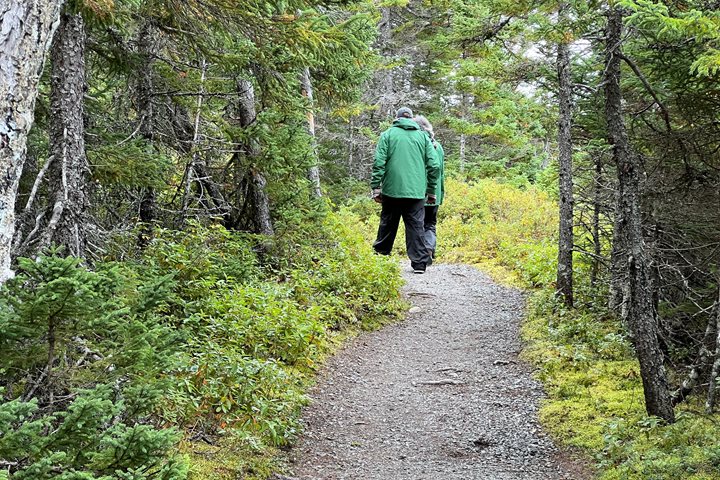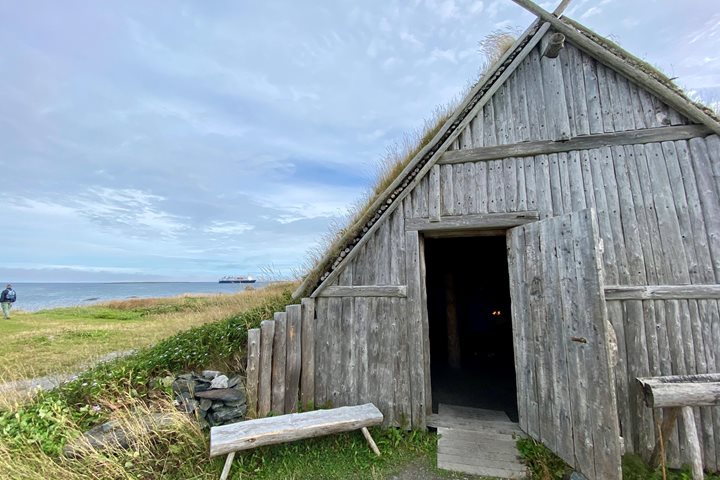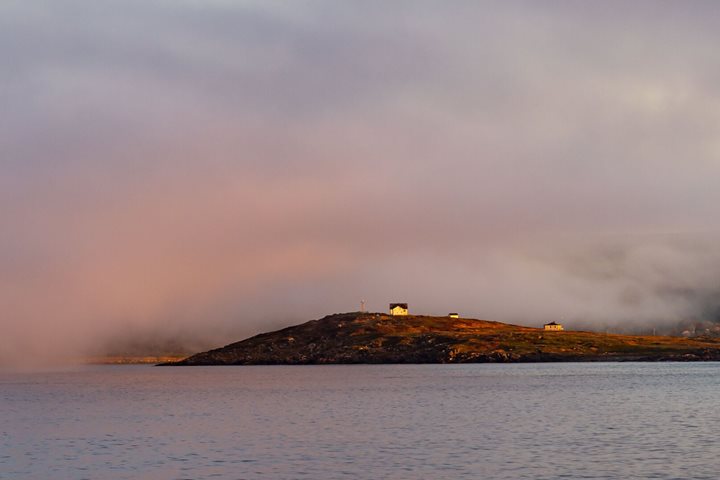We spent the morning at sea as we transited the Strait of Belle Isle, which separates southern Labrador from the northern peninsula of Newfoundland, and headed southward into the Gulf of St. Lawrence along the west coast of Newfoundland. The strong winds of yesterday died down early this morning, as predicted, but the resulting waves and swell system were much slower to dissipate. However, our stabilizers did their job well and made the ride reasonably comfortable, considering the sea conditions.
Our time aboard this morning was used to present a couple talks to help us better understand the human history and cultures of the region commonly known as Atlantic Canada—that is, Labrador, Newfoundland, Nova Scotia, New Brunswick, Prince Edward Island, and various small islands in the Gulf of St. Lawrence. We learned the story behind the preponderance of the Gaelic language in Newfoundland and Nova Scotia. Newfoundland was settled initially along the Atlantic coast by Irish fishermen, who called it Tailaimh Eisc or “Land of Fish.” Nova Scotia, which means “New Scotland,” was settled by Scots who were forced here through the infamous Scottish Highlands Clearances of the late 18th century. Today, about one quarter of all Gaelic-speaking people live in Atlantic Canada. We also learned of the long-continuing contention between Britain and France over this region and the movements of people within it, some forced and some freely chosen. The long history of Atlantic Canada is both fascinating and mind-boggling.
By lunchtime, we entered the protected waters of Bonne Bay in Gros Morne National Park and anchored near Woody Point. Gros Morne is the largest national park in Atlantic Canada. It is also a UNESCO World Heritage Site because of its importance in the study of plate tectonics. Here, at the famous Tablelands, one can see perhaps the best viewable examples of oceanic mantle material that has been pushed up on top of Earth’s crust through the action of colliding plates or continental drifting. This event occurred about 400,000,000 years ago! The astounding geology has also been re-sculpted more recently (within the last couple million years or so) through the action of glaciations … hence the beautiful fjords.
After a dry landing in the village of Woody Point, everyone headed to the Discovery Center, which is the primary interpretation site for the interesting regional geology of Gros Morne. This is essentially a “hands on” museum and does a very good job of describing and explaining the geological processes that went on here in the distant past. It also has nice displays describing the flora and fauna in the region. From here, some of us went on a wonderful hike through many different ecosystems high up into the Lookout Hills. The highlight of the hike for many of us was coming across a mother moose and her calf (although we did not realize there was a calf there with her until our return trip back down the trail late in the afternoon). We all eventually reached the top of the hill (or mountain, if you prefer) directly above the town, which put us at an elevation of about 1,400 feet. Fortunately, conditions were clear and we had excellent views of the fjord system we had sailed into late this morning, as well as forests, grasslands, fern beds (now changing into their autumnal colors), the surrounding Long Range Mountains, and of course, the Tablelands. Others among us travelled out to the Tablelands, where we had a chance to walk around and look at the geology, which is composed of ocean basin rock that had been uplifted here so long ago. It takes a trained eye to make anything special out of the exposed rocks, but having experts with us made it all the more exciting and significant. And, as a special bonus, we were greeted by the mayor of Woody Point when we returned to the landing site in the late afternoon.









